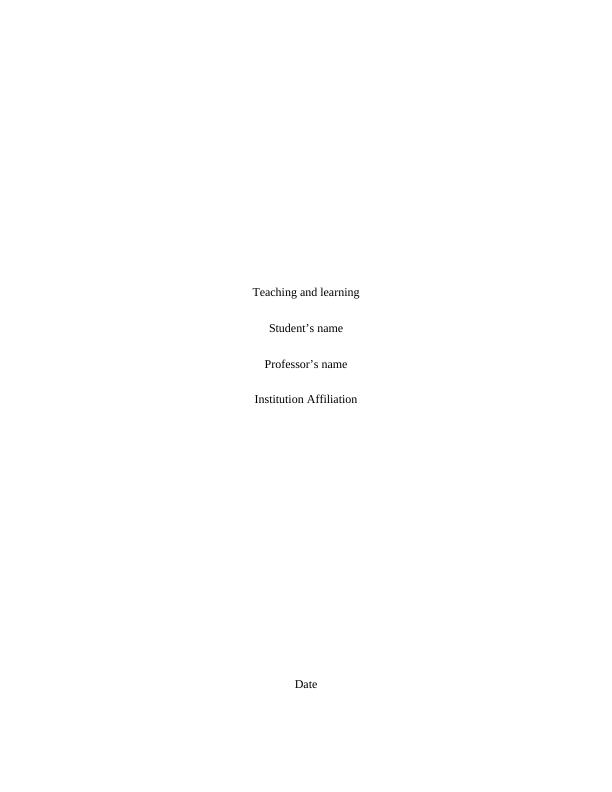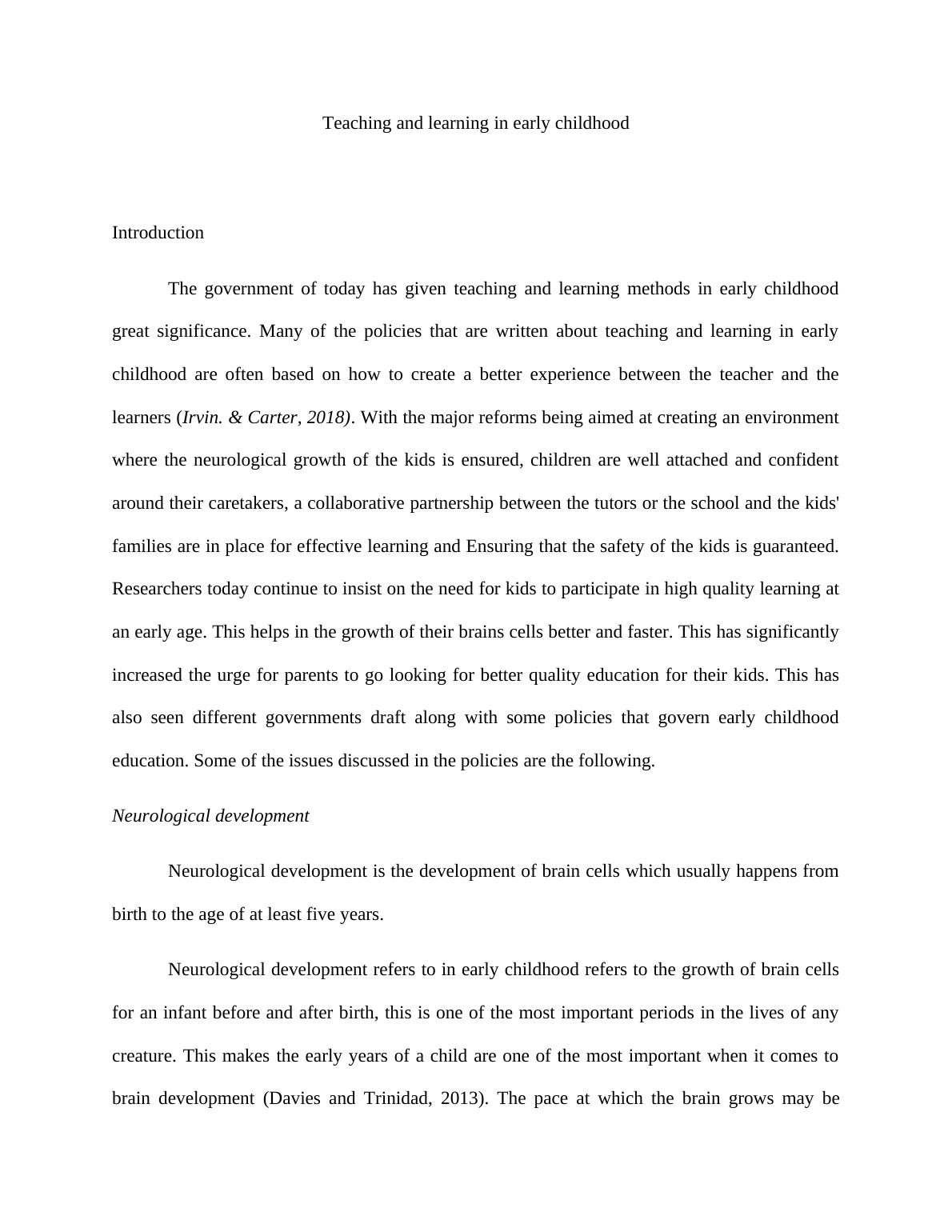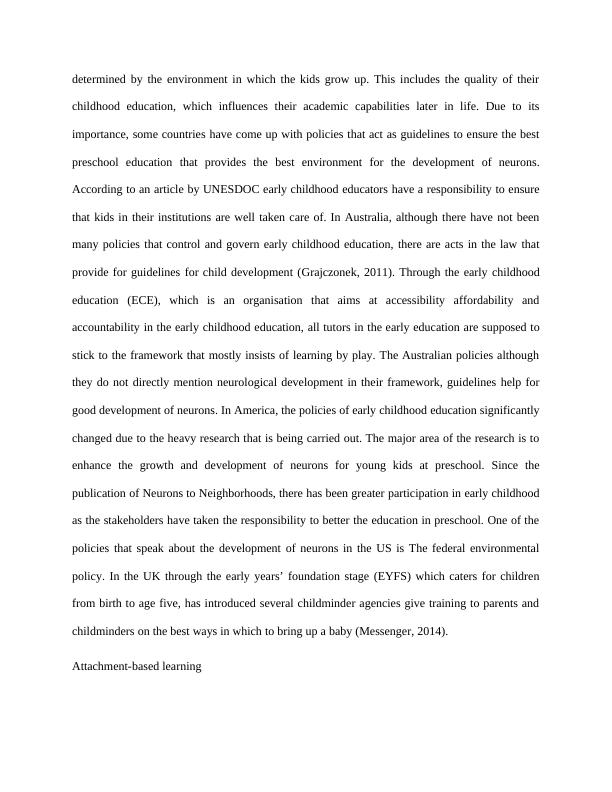Teaching and Learning in Early Childhood
Students collect a range of sample policy documents and review and discuss three of these policies in terms of teaching and learning that promotes neurological development, attachment based learning, collaborative partnerships, play-based learning practices, or the safety of children, birth to two.
9 Pages2311 Words18 Views
Added on 2022-09-11
Teaching and Learning in Early Childhood
Students collect a range of sample policy documents and review and discuss three of these policies in terms of teaching and learning that promotes neurological development, attachment based learning, collaborative partnerships, play-based learning practices, or the safety of children, birth to two.
Added on 2022-09-11
ShareRelated Documents
End of preview
Want to access all the pages? Upload your documents or become a member.
Critical Analysis of Teaching and Learning in Early Childhood Education
|13
|3777
|497
Childhood Care and Education
|5
|1169
|45
Challenges Faced by Preschool Teachers in Improving Oral Language Skills of Young Learners in Sri Lanka
|48
|14917
|403
The Controversial Role of Technology in Early Childhood Education and Care
|7
|1620
|140
Australian Child Care: EYLF and National Quality Framework
|6
|1516
|337
Australian Government Multicultural Statement and Early Childhood Education
|11
|2487
|17



